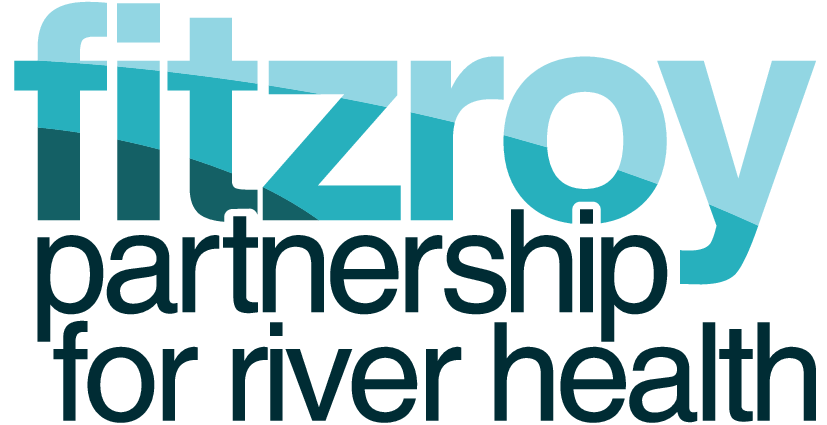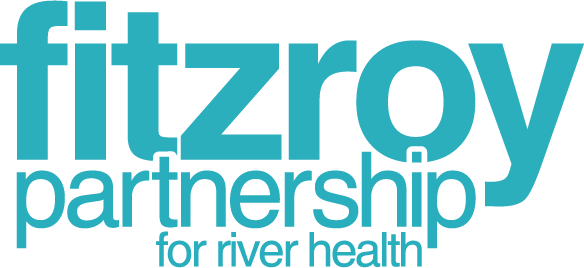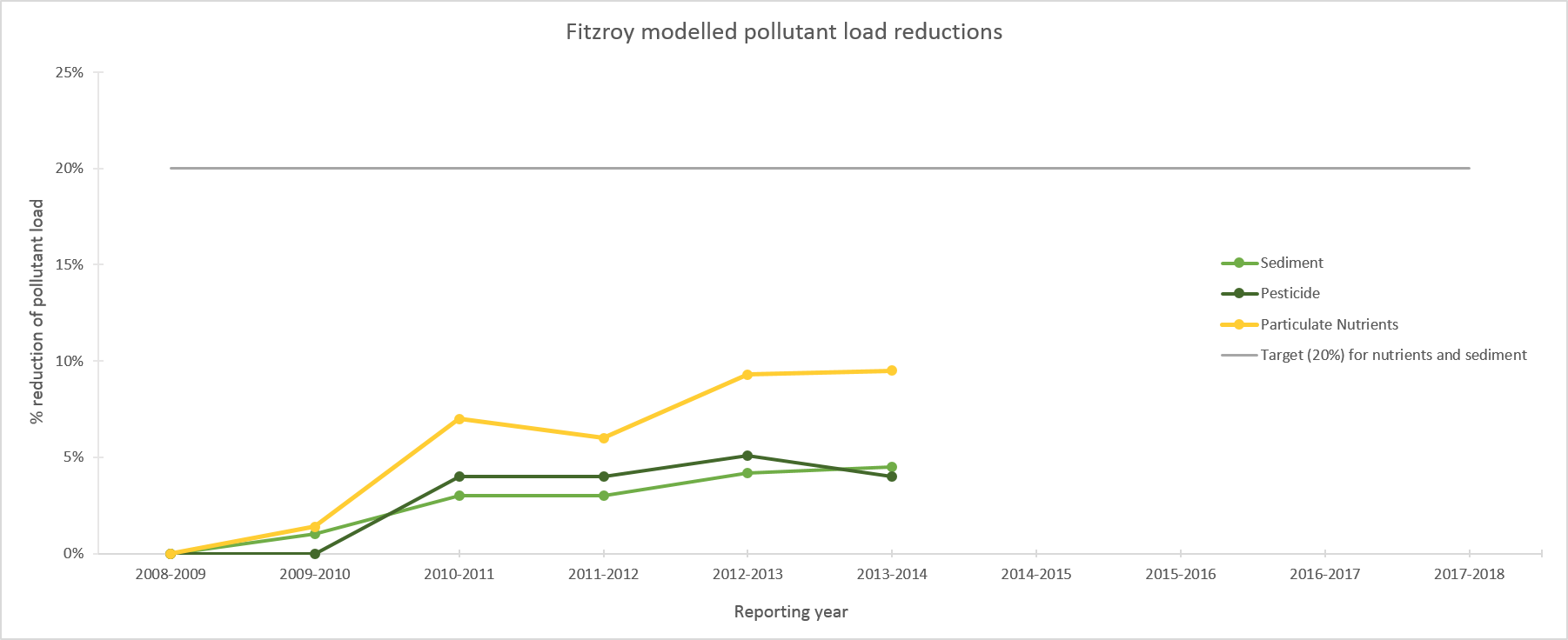[wqip-tabs]
Click on the tabs above to explore the water quality and land management targets for our region, the management priorities, and priority ecosystems
WQIP:2015 sets short-term targets for land management and water quality outcomes for the Fitzroy Region that match those set by the Queensland and Australian governments under Reef Plan. These targets are based on what are challenging, but realistic, ‘no regrets’ objectives for a five-year program (2015–2020) of water quality improvement.
Water quality targets have been set for nutrients, sediment and pesticides to achieve reductions at the end of the catchment, where rivers meet the sea. Nutrients and sediments are naturally found in our waterways but are now found at significantly increased levels due to the impacts of land and water use. Sediment and nutrient targets therefore set a reduction in the levels that are over and above ‘natural’ (that is, the ‘extra’ levels that come from human impacts). Pesticides are not naturally found in the environment. As such, pesticide targets will also be for either a ‘no further increase’ or a ‘reduction’ in current levels found in our waterways.
Land and catchment management targets have been set for agricultural land management, groundcover, riparian vegetation and wetlands. These targets are intermediate indicators that are linked to improved water quality. They apply across the catchment area and, like the water quality targets above, represent challenging but achievable targets for five years of activities (2015–2020).
While WQIP:2015 is a five-year plan, long-term outcomes need to be planned for. As such, as part of the WQIP:2015, draft ecologically relevant targets have been developed. Ecologically relevant targets attempt to define the pollutant load reductions that would be required to meet the Great Barrier Reef Water Quality Guidelines, which are set at a standard considered to be suitable to maintain ecosystem health. That is, the quality of water required to stop the Reef deteriorating further. To achieve ecologically relevant targets is a much more ambitious undertaking and should consider a long-term goal (i.e., 20 to 30 years). WQIP:2015 targets are shown below. The draft ecologically relevant targets can be found here.
Environmental values (EVs) and water quality objectives (WQOs) are being progressively determined for areas of Queensland under the Environmental Protection Policy (Water) 2009 (EPP (Water)). EVs/WQOs for Fitzroy Basin waters were scheduled in 2011 (with an update planned). EVs/WQOs for the Capricorn and Curtis Coasts were scheduled in 2014. WQOs for open coastal/marine waters have been based on the better of current water quality (as interpreted and analysed by GBRMPA), or GBRMPA water quality guidelines. Hence the WQOs scheduled in the EPP Water may have local variations from the GBRMPA guidelines. More detail on EVs/WQOs is available at the EHP website and here relating to marine ecosystems.
| Category | 5-year target
+ Info
|
Progress against targets (since 2008): Fitzroy | Progress against targets (since 2008): Reef-wide |
|---|---|---|---|
| Water quality targets | |||
| Sediment
+ Info
|
At least a 20% reduction in anthropogenic end-of-catchment sediment loads.
Anthropogenic load ~ 1,535,000 tonnes. Target is for a reduction of 307,000 tonnes. Sediment is the main pollutant of concern to the Reef for the Fitzroy Region. |
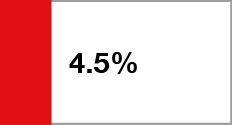 |
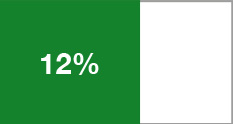 |
| Particulate nutrients
+ Info
|
At least a 20% reduction in anthropogenic end-of-catchment particulate nutrient loads.
Anthropogenic particulate nitrogen load ~ 3,350 tonnes. Target is for a reduction of 670 tonnes. Anthropogenic particulate phosphorous load ~ 2,000 tonnes. Target is for a reduction of 400 tonnes. By controlling the movement of sediment, we can control the movement of particulate nutrients. |
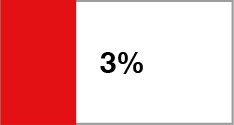 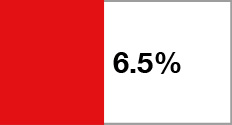 |
 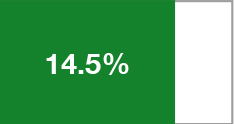 |
| Herbicides
+ Info
|
+ Info
No increase in herbicide loads to the Reef. Continue to work with cropping and grazing enterprises to encourage best practice farming techniques. |
Not applicable |  |
| Dissolved inorganic nitrogen
+ Info
|
+ Info
No dissolved inorganic nitrogen target has been set for the Fitzroy under WQIP:2015. Continue to work with cropping enterprises to encourage best practice farming techniques. |
Not applicable | 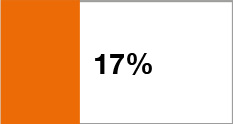 |
| Land and catchment management targets | |||
| Best management practices
+ Info
|
90% of grazing and cropping lands are managed using best management practice systems (soil, nutrients and pesticides). | 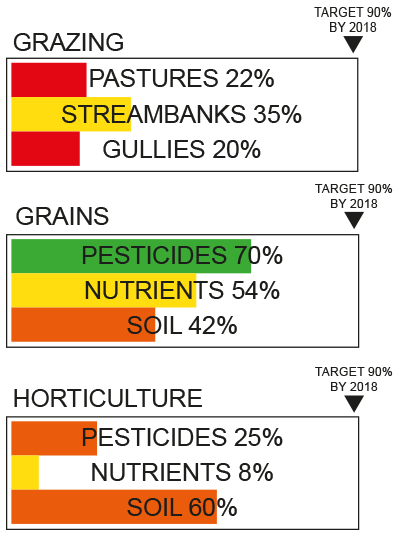 |
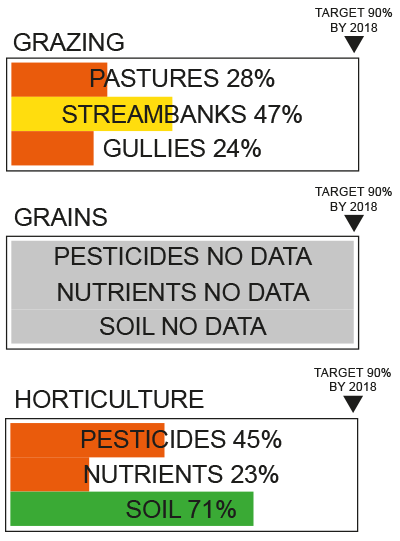 |
| Ground cover
+ Info
|
At least 70% late dry season groundcover on grazing lands. |  |
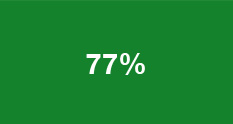 |
| Riparian areas
+ Info
|
The extent of riparian areas is increased. | 14,777 ha loss (0.7%) | 30,980 ha loss (0.4%) |
| Wetlands
+ Info
|
No net loss of the extent, and an improvement in the ecological processes and environmental values, of natural wetlands. | 348 ha loss (0.1%) | 330 ha loss (<0.1%) |
The Reef Plan target for pesticides Reef-wide is at least a 60 per cent reduction in end-of-catchment pesticide loads.
Current concentrations of PSII herbicides in the Fitzroy Region’s marine environment the Fitzroy Region are not at a level likely to cause harm to the Reef environment. This is not to say that local freshwater environments are not being impacted on. As the use of zero tillage farming increases to protect the soil, farmers’ reliance on herbicides will naturally increase and best management practices in regards to application methodology and timing should continue to be encouraged to protect the Reef and local waterways
[contentblock id=target-table-controller]

